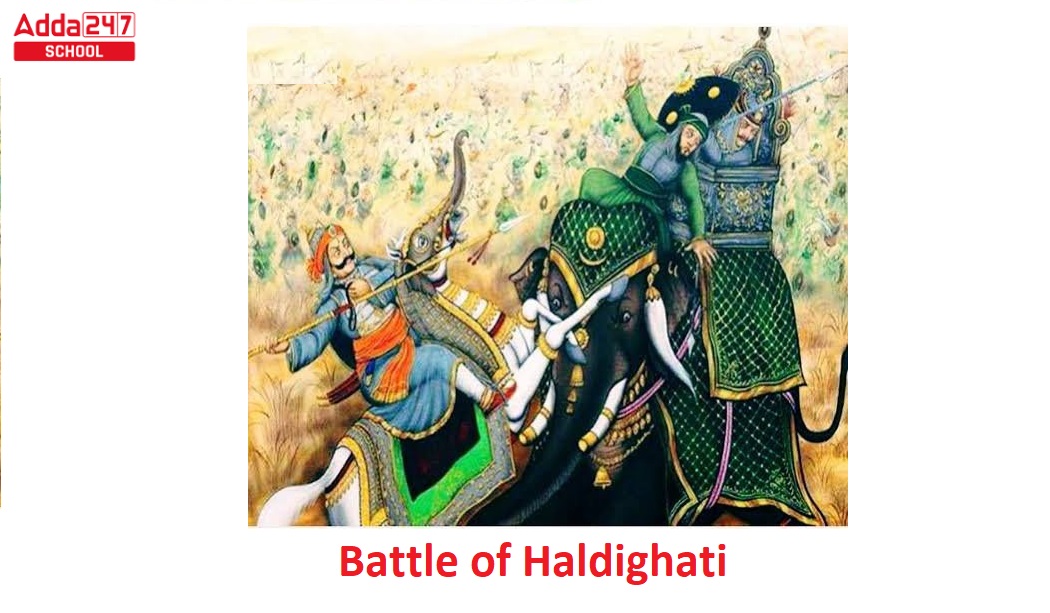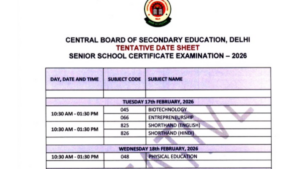Battle of Haldighati: In 1576, the Battle of Haldighati has changed the political and military dynamics of India in 16th century. The battle between Rajputs (mainly Maharana pratap) and Mughals of in the Haldighati have their own importance of history. Even in government exams, the Battle of Haldighati puts its weight to the exam and this is why, generally, students ask many questions about the Battle of Haldighati.
In this article, we have added all the important facts and information about the Battle of Haldighati. If you are here to increase your knowledge about history of the Battle of Haldighati, then please read this article fully.
Battle of Haldighati Dates in History
The historical context of the Battle of Haldighati is rooted in the political and military dynamics of 16th century India. At the time, the Mughal Empire, led by Emperor Akbar, was expanding its control over various parts of India, including the Rajput kingdoms of Rajasthan. The Rajputs were a group of Hindu warrior clans who had traditionally ruled over their own territories and fiercely defended their independence and way of life.
In 1568, Akbar’s forces had successfully conquered the Rajput kingdom of Chittor, and the Rajput rulers were forced to either submit to Mughal rule or face military defeat. Maharana Pratap Singh, the Rajput ruler of Mewar, refused to surrender to the Mughals and instead chose to fight for his kingdom’s independence.
The Battle of Haldighati was a major confrontation between the Mughal army, led by Raja Man Singh I, and the forces of Maharana Pratap, who was supported by other Rajput clans.
The battle was significant in that it symbolized the struggle of the Rajputs to resist Mughal domination and preserve their way of life. Despite the defeat of the Rajputs, the battle is remembered as a symbol of valour and courage, and the legacy of Maharana Pratap continues to inspire many people in India today.
Battle of Haldighati was Fought Between
We have listed a few of the key players of the Battle of Haldighati was Fought Between Below:
| Players | Role |
| Maharana Pratap Singh: | The Rajput king of Mewar who led his army in the battle against the Mughals. |
| Raja Man Singh I: | The Mughal commander who led the imperial army in the battle. |
| Hakim Sur Raja Mansuri: | A commander in the Mughal army who led the left flank. |
| Asaf Khan: | A commander in the Mughal army who led the right flank. |
| Abdullah Khan Uzbeg: | A commander in the Mughal army who led the central force. |
| Bhil tribals: | The indigenous tribal people who fought on the side of Maharana Pratap. |
| Rawat Krishnadas: | The chief minister of Mewar who advised Maharana Pratap on military strategy. |
| Jhala Man Singh: | A commander in the Rajput army who fought in the battle. |
| Bhamashah: | A wealthy nobleman who provided financial support to Maharana Pratap’s army. |
| Sardar Jai Singh I: | A commander in the Mughal army who later became a Rajput ally. |
| Ram Shah Tanwar: | A Rajput nobleman who fought on the side of Maharana Pratap. |
| Kalla Dhoondhara: | A Rajput warrior who is said to have killed many Mughal soldiers in the battle. |
| Hathi Singh Kachwaha: | A commander in the Rajput army who fought in the battle. |
| Ram Das Rathore: | A Rajput nobleman who fought on the side of Maharana Pratap. |
| Alam Khan: | A Mughal commander who led a group of Afghan soldiers in the battle. |
| Zain Khan Koka: | A Mughal commander who fought in the battle. |
| Bhama Shah: | A Rajput nobleman who provided financial and material support to Maharana Pratap’s army. |
| Kumbha Ram Arya: | A Rajput warrior who fought on the side of Maharana Pratap. |
| Mewar cavalry: | A group of Rajput horsemen who fought in the battle. |
| Mughal artillery: | The artillery units of the Mughal army who provided fire support during the battle. |
Battle of Haldighati Who won
The outcome of the Battle of Haldighati was a Mughal victory, as they were able to defeat the Rajput forces led by Maharana Pratap Singh. However, the Mughals suffered heavy casualties in the battle, and Maharana Pratap was able to escape with his life and continue his fight against Mughal rule.
The aftermath of the Battle of Haldighati saw Maharana Pratap and his forces continue to resist Mughal rule in the region. Maharana Pratap went into hiding and launched a guerrilla warfare campaign against the Mughals, which lasted for many years. He refused to submit to Mughal authority and continued to fight for the freedom and independence of his kingdom.
The battle had a significant impact on the history of the region, as it symbolized the struggle of the Rajputs against Mughal imperialism. Maharana Pratap’s bravery and determination in the face of overwhelming odds made him a popular figure among the people of Rajasthan, and he is still remembered as a hero who fought for the dignity and independence of his people. The battle also solidified the importance of cavalry and guerrilla warfare tactics in Rajput military strategy.
The significance of Maharana Pratap’s leadership in the Battle of Haldighati
Maharana Pratap’s leadership in the Battle of Haldighati was significant for several reasons:
- Bravery and courage:
Maharana Pratap’s leadership was characterized by his bravery and courage on the battlefield. He fought alongside his soldiers and refused to flee the battle despite the overwhelming odds against him.
- Military strategy:
Maharana Pratap’s military strategy was focused on guerrilla warfare tactics, which proved effective in harassing the Mughal forces and disrupting their supply lines. He also utilized the natural terrain to his advantage and made use of narrow mountain passes to channel the Mughal forces into chokepoints.
- Unity:
Maharana Pratap’s leadership brought together people from different castes and communities to fight against the Mughals. He was able to unite the Rajput clans under his banner and form a cohesive force to resist Mughal rule.
- Symbolism:
Maharana Pratap’s leadership symbolized the Rajput resistance against Mughal imperialism. He refused to submit to Mughal authority and fought for the freedom and independence of his kingdom, becoming a symbol of resistance and defiance against the Mughal Empire.
- Inspiration:
Maharana Pratap’s leadership inspired his soldiers and the people of Rajasthan to continue their fight against the Mughals. He became a popular figure among the people and his legacy continues to inspire people to this day.









 CBSE Class 12 Date Sheet 2026 PDF Out, C...
CBSE Class 12 Date Sheet 2026 PDF Out, C...
 Download CLAT Previous Year Question Pap...
Download CLAT Previous Year Question Pap...
 CLAT 2026 Exam Date, Application Last Da...
CLAT 2026 Exam Date, Application Last Da...

















